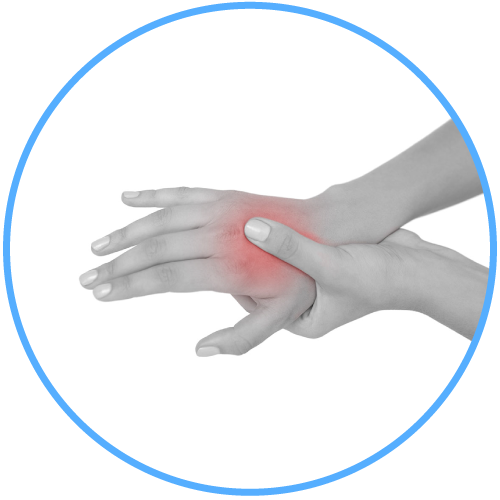
Carpal Tunnel Syndrome
This condition is characterised by a burning wrist pain and numbness, tingling, itching in the palm of the hand and the fingers. Carpal tunnel syndrome occurs when the tissues surrounding the flexor tendons in the wrist swell and put pressure on the median nerve. Symptoms usually start gradually over time but may occur at any time especially after repetitive hand movements in some occupation. Because many people sleep with their wrists curled, symptoms at night are common and may cause sleep disturbance.
If diagnosed and treated early, carpal tunnel syndrome can be relieved without surgery. The treatment focuses on relieving pressure on the median nerve.
- Therapeutic bracing and splinting
- Therapeutic exercises to relieve pressure and stretch ligament
- Education on activity/modification of activity
DeQuervain’s tenosynovitis
DeQuervain’s tenosynovitis is a condition affecting the tendons on the thumb which cross the wrist joint. Inflamation of the tendons, can cause pain and tenderness along the thumb side of the wrist. This is particularly noticeable when forming a fist, gripping something, pinching or when turning the wrist.
The goal in treating DeQuervain’s tenosynovitis is to relieve the pain caused by irritation and swelling.
- Therapeutic exercises (stretching and strengthening)
- Education on activity modification and body mechanics
Wrist Fracture
Injuries of the wrist often occur as a result of a fall to an outstretched hand particularly in the elderly. The most common acute injuries are the fracture of the distal radius (Colles fracture), ulna or scaphoid bone, or ligament tears. A broken wrist usually causes immediate pain, tenderness, bruising, and swelling.
If the fractured bone is in the right position, a cast may be applied until the bone heals. When broken and the fracture is complex or bones are out of place, surgery will be necessary to reduce the joint followed by a period of immobilisation.
Physiotherapy focuses on rehabilitation to regain muscle strength, and full range of motion.
- Therapeutic exercises
- Joint and soft tissue mobilisation



